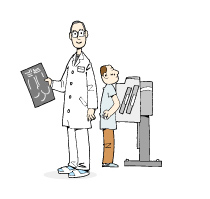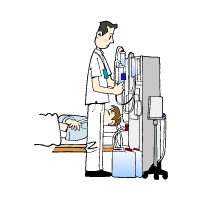「明治日本の産業革命遺産群」が世界文化遺産に登録【文化】

八幡製鉄所や軍艦島(端島炭鉱)など8県23件
ユネスコの世界文化遺産に、「明治日本の産業革命遺産 製鉄・製鋼・造船・石炭産業」が登録されました。今回の登録で日本の世界文化遺産は、昨年の「富岡製糸場と絹産業遺産」に次いで15件目、世界自然遺産4件を含めると19件目となります。
今回の特徴は、広域にわたる複数の資産が一括して登録(シリアル・ノミネーション)されたことや、現在も稼働中の施設が含まれていることです。
The 23 sites, dispersed over eight prefectures including the Yawata Steel Works and Gunkanjima (the Hashima Coal Mine)
Sites of Japan's Meiji Industrial Revolution: Iron and Steel, Shipbuilding and Coal Mining, have been registered as a UNESCO World Heritage site. It would be the 15th cultural property listed in Japan, following the "Tomioka Silk Mill and Related Sites" last year. Now Japan has a total of 19 sites (including 4 natural heritage sites) on the World Heritage List.
In recommending the sites this year, the government nominated many properties in the same thematic group in a single application (serial nominations) and the facilities still in operation.
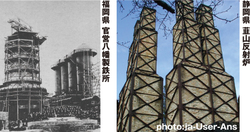 - 日本で19件目の世界遺産 -
- 日本で19件目の世界遺産 -世界遺産とは、ユネスコが1972年に採択した世界遺産条約に基づき、文化遺産や自然遺産、複合遺産を将来にわたって人類全体の財産として保護する制度です。 世界遺産条約成立のきっかけになったのは、エジプト政府が1960年代に始めたアスワン・ハイ・ダムの建設です。アスワン・ハイ・ダムが完成すると、ヌビア遺跡が水没するため、ユネスコはヌビア水没遺跡救済キャンペーンを展開し、遺跡内のアブ・シンベル宮殿の移築を実現しました。 こうした経緯を経て、1972年のユネスコ総会で世界遺産条約が成立し、1978年の世界遺産委員会でウルグアイのガラパゴス諸島、アメリカのイエローストーン国立公園など12件(文化遺産8件、自然遺産4件)が第1号の世界遺産として登録されました。日本では1993年に法隆寺地域の仏教建造物、姫路城、屋久島、白神山地が初めて登録され、今回の「明治日本の産業革命遺産群」の登録で19件目となります。
- 19 sites on the World Heritage list -
“Convention for the Protection of the World Cultural and Natural Heritage,” adopted in 1972, defines that a World Heritage Site is a place of cultural or natural significance that is considered to have outstanding universal value and is worthy of protection. The basis for the World Heritage program arose when the Egyptian government began to construct the Aswan High Dam in 1960. When the Aswan High Dam in Egypt was constructed, the Abu Simbel temples had to be moved to avoid being submerged in the rising waters. UNESCO mounted the Nubia Campaign with the task of carrying out the move of them. The World Heritage Convention was adopted by the General Conference of UNESCO in 1972. A total of 12 sites (8 cultural heritage sites and 4 natural heritage sites) including the Galapagos Islands (Ecuador) and Yellowstone National Park (U.S.) were inscribed on the world heritage list for the first time in 1978. In Japan, Buddhist Monuments in the Horyu-ji Area, Himeji Castle, Yakushima Island, and Shirakami-Sanchi were the first world heritage sites registered in 1993. Japan’s “Sites of the Meiji Industrial Revolution” brought Japan’s total World Cultural or Natural Heritage sites to 19.
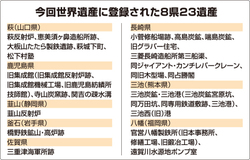 - 1853年から1910年までの遺産 -
- 1853年から1910年までの遺産 -今回登録された一連の産業遺産群は、1853年から1910年(幕末から明治後半)までのわずか50年余りの間に、日本が西洋の技術を日本の伝統的な技術と融合させ、急速に近代産業国家に変貌したことを証明する遺産として評価されました。一連の産業遺産は幕末、明治前期、明治後期の三段階を反映しています。
【第一段階 幕末期】
アメリカのペリーが1853年に浦賀に来航し、鎖国中の日本に開国を求めました。翌年、日米和親条約を締結して215年間続いた日本の鎖国状態は終わりました。江戸幕府や各藩は、欧米列強の脅威に備えるために西洋の技術書などから知識を導入し、それを模倣する形で産業化を進めていきました。 山口県に点在する遺産群の多くは幕末の遺産です。松下村塾からは、幕末から明治にかけて日本の近代化・産業化に貢献した高杉晋作、山縣有朋、伊藤博文などを輩出しました。また、押し寄せる欧米列強に対し、オランダなどの技術をもとに大砲製造のための萩反射炉、恵美須ヶ鼻造船所では洋式軍艦を製造しました。 薩摩藩主島津斉彬は産業育成と軍事強化を図るため、集成館事業として製鉄・造船・紡績などの幅広い分野を手掛けました。また、集成館事業を支える疎水溝も作られ、現在でもその一部が灌漑用水として利用されています。 江戸幕府も大砲製造のために耐火煉瓦製の韮山反射炉を作りました。現存する反射炉は萩反射炉と韮山反射炉の2基となっています。
【第二段階 明治前期】
明治時代になると、遣欧使節団を派遣するなど積極的に海外の技術やそれを実践する専門的知識の導入を行いました。明治政府は富国強兵というスローガンを提唱し、そのために殖産興業という産業育成政策を打ち出しました。この政策に沿って1872年に官営模範工場として富岡製糸場を建設しました。昨年、「富岡製糸場と絹産業遺産群」が世界遺産に登録されたことはまだ記憶に新しいと思います。日本の産業化は軽工業から始まり、重工業に移っていきます。 明治前期は、開国に伴って交易が活発になっていきました。そのため、蒸気船の需要が高まり、その燃料となる石炭の産出が急がれました。三菱長崎造船所や各炭鉱は明治前期に稼働を始めたもので、蓄積された技術は全国に広がっていきました。 旧グラバー住宅は、小菅修船場や高島炭鉱などの経営を通して日本の近代化に貢献したスコットランド出身の実業家トーマス・グラバーの住宅です。
【第三段階 明治後期】
明治半ばから、軍事力の強化や産業活動の活発化などで鉄鋼の需要が急速に高まりました。官営八幡製鉄所(現新日鉄住金)はこうした社会背景のもと、日清戦争で得た賠償金をもとに建設されました。 高炉を稼働させるには大量のコークスを必要とします。八幡製鉄所がある北九州の周辺には明治初期から数多くの炭鉱で石炭が採掘されていました。時代を追って新技術の導入や技術改良などで生産性を高めていきました。こうして製鉄と炭鉱を中心とした北九州工業地帯が形成されました。1910年に建設された遠賀川水源地ポンプ室は、鉄鋼生産に必要な工業用水を遠賀川上流から取水して八幡製鉄所に送水する施設です。 世界遺産に登録された「明治日本の産業革命遺産群」は、幕末から明治時代という近代日本の揺籃期を支えた産業を評価したもので、今日の産業社会を考える上で貴重な遺産となっています。
-Heritage, 1853~1910-
Japan’s ability to combine Western technologies with its own traditional skills and achieve industrialization in just over 50 years (1853〜1910, from the end of the Edo period to the early Meiji period) is evaluated. A series of industrial heritage sites reflect the three phases; the end of the Edo period, the early Meiji period, the late Meiji period.
【First stage, the end of the Edo period】
Perry arrived at Uraga in 1853 and submitted a message demanding the opening the country. The treaty between the United States of America and the Empire of Japan was concluded the following year. The Japanese isolation policy that had lasted for 215 years was abolished. During the Edo period, Japan learned Western technology through books and imitated it to prepare for threats from western powers. Many of the properties scattered across Yamaguchi Prefecture are heritage sites of the end of the Edo period. Shokasonjuku produced a number of great persons such as Takasugi Shinsaku, Yamagata Aritomo and Ito Hirobumi who contributed to the modernization of Japan. When there was a sense of growing crisis against the Western powers, Hagi reverberatory furnace made cannons with Dutch technology, and Ebisugahana shipyard built the Western warships. Shimazu Nariakira, the lord of Satsuma domain launched Shuseikan Project, including the steel industry, the shipbuilding industry, and the spinning industry, to promote policy of increasing wealth and military. The Edo Shogunate built the reverberatory furnace with firebricks to cast iron cannon in Nirayama. In Hagi and Nirayama, there are the only existing substantial remains of furnaces today.
【Second stage, the early Meiji period】
The Meiji government sent out a diplomatic delegation to absorb Western systems and technology aggressively. The Meiji government adopted a policy to promote industries actively, under the slogan of “Fukoku-kyohei”: enriching the country and strengthening the military. Tomioka Silk Mill was built as the government-operated model factory in 1872. Last year, the “Tomioka Silk Mill and Related Sites” were registered in the World Heritage List, and it is still fresh in our memory. The development of industry which had been led by light industries, would move to be led by heavy industries. In the early Meiji period, international trade became active by opening of the country to the world. Then, there was an urgent need to increase coal production because the demand for steamships had increased. The Nagasaki shipyard run by Mitsubishi Heavy Industries and each mine started operation in the early Meiji period. The former Glover House is the house of businessman Thomas Glover born in Scotland. He contributed to the modernization of Japan through the development of the Kosuge Slip Dock and Takashima Coal Mine.
【Third stage, the late Meiji period】
Demand for steel increased rapidly to strengthen military force and invigorate industrial activity during the Meiji period. The state-owned Yawata Steel Works (now owned by Nippon Steel & Sumitomo Metal Corporation) was constructed with the Sino-Japanese War reparations. A blast furnace operation requires a large amount of coke. Coal was mined around northern Kyushu in which the Yawata Steel Works is located. New technology or improved technology enhanced their productivity. Thus, the Northern Kyushu industrial zone centering on steel manufacturing and the coal mining was formed. The Onga River Pumping Station, completed in 1910, supplies the industrial water needed for steel production at the Yawata Steel Works. “Sites of the Meiji Industrial Revolution”, registered as one of the World Heritage sites, are our precious heritage representing the country’s industrialization from the late Edo Period to the early Meiji Era: early days of the modernization of Japan.
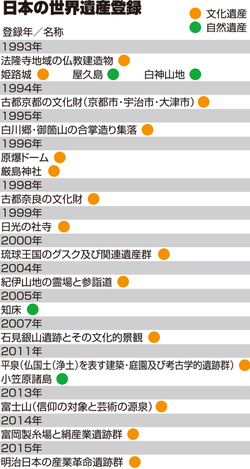 - 近代化の過程で「負の歴史」も -
- 近代化の過程で「負の歴史」も -「明治日本の産業革命遺産群」の世界遺産登録をめぐって、韓国から登録に反対する声が上がりました。登録を目指す遺産群の中に、戦時中に動員された朝鮮半島出身者が「強制労働」させられた施設が含まれ、世界遺産に相応しくないというものです。 日本側は、登録された遺産は1910年以前に日本で産業化が成功した事例であることや、厳しい環境下で働かされたが強制労働ではないとして韓国の指摘に反論してきました。 しかし、6月21日に行われた日韓外相外務大臣会談で、朝鮮半島出身者が動員されたという「負の歴史」を踏まえた情報発信を行うことで合意し、ドイツのボンで開かれた世界遺産委員会で世界遺産への登録が決まりました。
-“Negative history” of modernization-
South Korea opposed to the listing “Sites of the Meiji Industrial Revolution” to the World Heritage list because some of the sites used forced laborers from the Korean Peninsula. The Japanese side argues that the sites are recognized as exemplifying Japan’s success before 1910, in terms of becoming an industrialized nation. Japanese officials said, “forced to work” does not mean “forced labor.” At a June 21 meeting of their foreign ministers, Japan and South Korea reached a basic agreement to cooperate on heritage listings of each other’s sites. The Japanese government promised to include accounts of “negative history” in its messages to the world. “Sites of the Meiji Industrial Revolution” have been registered as a World Heritage site at the UNESCO World Heritage Committee meeting in Bonn.






